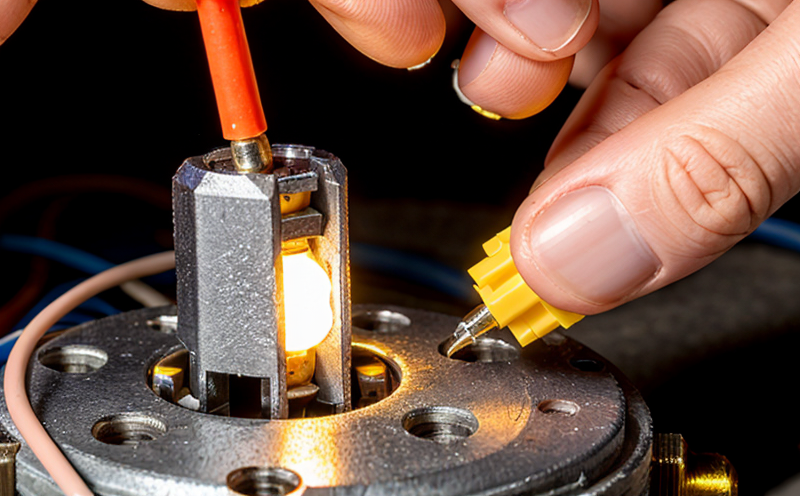Fuse and protection device inspection
In electrical and electronic systems, fuses and protection devices play a critical role in safeguarding circuits from potential damage due to overcurrent conditions. These devices are designed to interrupt the flow of current when it exceeds safe levels, thereby preventing overheating and subsequent fire hazards. The importance of fuse and protection device inspection cannot be overstated, as these components are integral to ensuring the reliability and safety of electrical installations.
The process begins with a thorough visual examination, which is critical for identifying any visible signs of wear or damage that could indicate imminent failure. This step involves checking for corrosion on terminals, cracks in the fuse element, and any other physical defects. Once identified, such issues can be addressed promptly to avoid cascading failures within the system.
For precision testing, specialized equipment is used to measure key parameters including resistance, voltage drop across the device, and the current rating. These tests help determine whether the fuse or protection device meets its rated specifications. Compliance with international standards such as IEC 60269-1 for fuses ensures that the devices are reliable under specified conditions.
Another critical aspect of inspection is the evaluation of thermal performance, which involves monitoring how effectively the device dissipates heat. This is particularly important in high-intensity applications where prolonged operation can lead to overheating and reduced lifespan. In this context, infrared thermography may be employed to assess heat distribution across the fuse or protection device.
For fuses specifically, it's essential to perform a blow test to ascertain its breaking capacity under fault conditions. This involves subjecting the fuse to controlled overcurrent events to verify that it performs as expected without sustaining damage. Similarly, for protection devices such as circuit breakers and residual current devices (RCDs), testing is conducted on their trip characteristics using standard load scenarios defined by relevant standards.
During inspection, the integrity of connections and terminations is also thoroughly checked to ensure they are secure and free from loose wires or corrosion. Proper termination is crucial for maintaining consistent electrical performance and preventing arcing at connection points, which can lead to further damage or fires.
The findings from these inspections are compiled into detailed reports that document all observations and test results. These reports serve as valuable tools for quality managers and compliance officers in making informed decisions regarding maintenance schedules, replacement strategies, and overall system upgrades. For R&D engineers involved in the development of new electrical systems, this data provides insights into real-world performance metrics which can inform design improvements.
By adhering to rigorous inspection protocols, organizations not only enhance their compliance with regulatory requirements but also contribute significantly to occupational health and safety standards. The proactive identification and rectification of potential issues translate into reduced downtime, lower repair costs, and increased operational efficiency across various industries reliant on robust electrical infrastructure.
The use of advanced instrumentation and adherence to international standards ensures that inspections are conducted with precision and repeatability. This approach fosters trust among stakeholders by providing transparent evidence of compliance and performance. In summary, fuse and protection device inspection is a cornerstone of effective electrical safety management practices.
Benefits
The benefits of conducting thorough inspections on fuses and protection devices extend beyond mere compliance with regulations; they encompass significant improvements in operational efficiency, enhanced occupational health and safety, and reduced risk of costly downtime. Here are some key advantages:
- Increased Reliability: Regular inspections ensure that critical components remain functional and reliable, thereby minimizing unexpected failures.
- Improved Safety: By detecting potential hazards early on, inspections help prevent accidents and injuries associated with electrical malfunctions.
- Cost Savings: Proactive maintenance through regular inspections can significantly reduce the costs linked to unplanned repairs and replacements.
- Enhanced Compliance: Adherence to stringent inspection standards ensures that organizations meet all relevant regulatory requirements, avoiding penalties and sanctions.
- Better Decision-Making: Detailed reports generated from inspections provide valuable data for informed decision-making by quality managers and compliance officers.
- Increased Efficiency: Identifying and addressing issues promptly leads to smoother operations with minimal disruptions, thereby boosting productivity.
Industry Applications
The application of fuse and protection device inspection is widespread across multiple sectors due to the critical role these components play in safeguarding electrical systems. Here are some key industry applications:
- Manufacturing: Ensures safe operation in environments where equipment failures could lead to catastrophic accidents.
- Construction: Helps prevent fires and other hazards during installation and commissioning of electrical systems.
- Telecommunications: Protects sensitive electronics from overcurrent events that can cause data loss or system failure.
- Transportation: Guarantees safety in vehicles where electrical malfunctions could compromise vehicle integrity.
- Healthcare: Critical for maintaining reliable power supply to essential medical equipment and facilities.
- Data Centers: Ensures uninterrupted service by safeguarding against potential disruptions caused by electrical faults.
Environmental and Sustainability Contributions
The practice of fuse and protection device inspection contributes positively to environmental sustainability in several ways:
- Energy Efficiency: By ensuring that electrical systems operate optimally, inspections help reduce energy wastage.
- Material Recycling: Proper disposal and recycling of old or defective fuses and protection devices promote sustainable waste management practices.
- Reduced Carbon Footprint: Minimizing downtime and preventing equipment failures reduces the need for continuous maintenance, thereby lowering overall energy consumption.
- Cost Reduction: Lower operational costs lead to greater affordability of renewable energy solutions, supporting broader sustainability goals.





